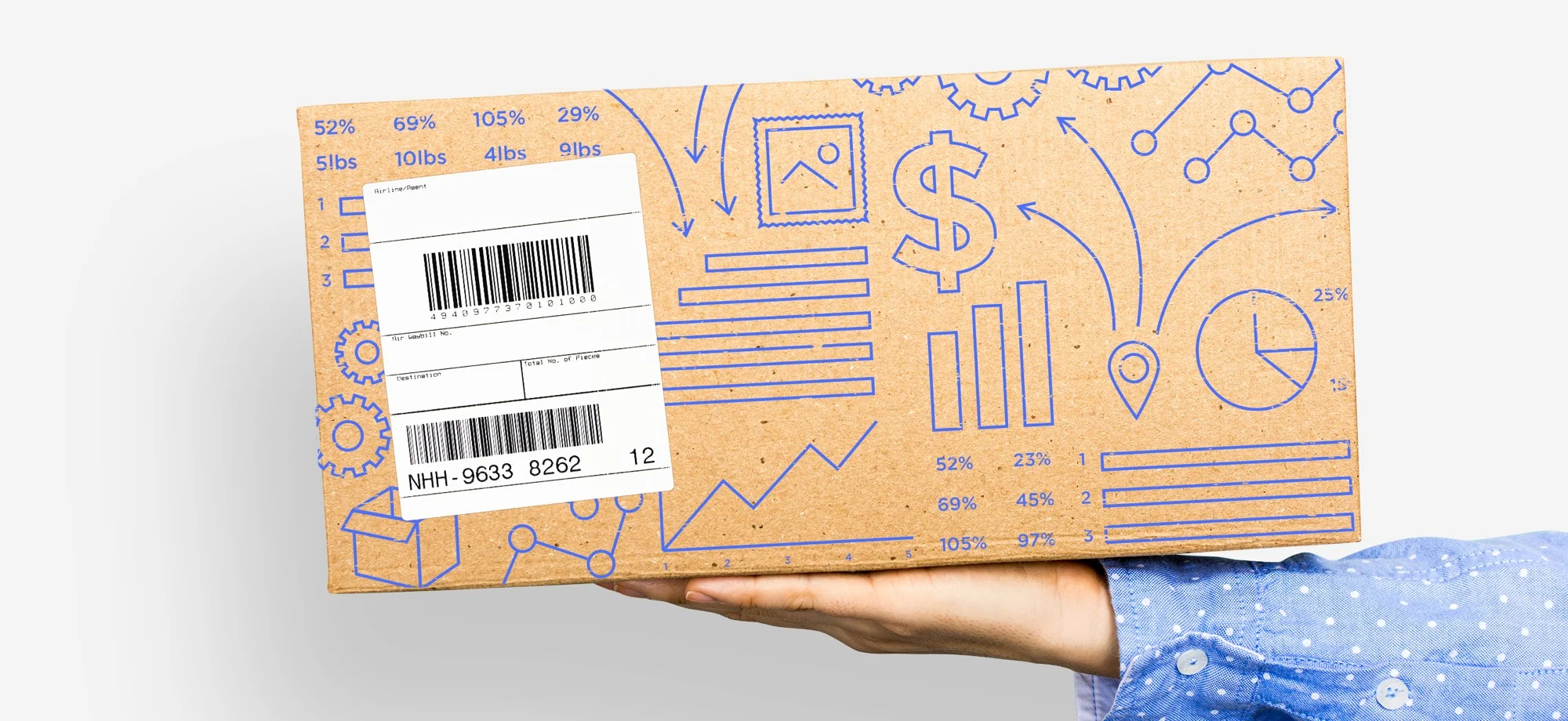How to Know You’re at the End of Your Rope with Shipping Tasks

When you spend all your time on shipping: picking, packing, driving to the carrier’s office, waiting in line… (you get the picture), running your business has turned into running in circles.
This chapter in our handbook for small business shipping will identify common land mines — so you can sidestep them on your way to smooth operational efficiency. Combined with your knowledge of warehousing and shipping costs, you’ll be 75% of the way towards having an operation that fires on all cylinders.
If you identify with any of the following events, it’s time to look for a software that can help make your [shipping] life more efficient.
You’re handwriting addresses.
Some may say that the age of writing physical letters is dead because of the keyboard. Some may long for the days of flowing pens on paper and the individuality of each of our unique handwriting.
And while it’s definitely something we encourage as a personal inclusion in your packaging, it’s not something you should be using on your shipping labels. Not only does handwriting addresses take quite a while, it’s also prone to error, from both misreading/miswriting the customer’s address or the carrier worker misreading the label thereafter.
You stand in line at the carrier location.
No one likes wasting an hour (or more) at a carrier’s physical location while waiting for a teller to open up so you can ship your products. You’ve already spent so much time getting the proper information on your shipments so that they’re ready to go.
Not only are you usually paying more in postage (the carrier has to employ those people to work, after all), you’re also spending more time than you need by going to the physical location rather than getting the packages picked up if you printed the labels at home.
You’re going from carrier website to carrier website.
We all know the best way to ship something isn’t through a single carrier. They each have their strengths and weaknesses, as well as cost structure. If you’re going from carrier to carrier on the web, copying and pasting your customers’ information into each, and printing labels from there, you’re wasting precious time you could be spending on other parts of running your business.
You complete one order at a time.
Even if you are using online postage, how you ship your products is just as impactful as any of the above inefficiencies. Taking one order and working on just it from start to finish isn’t the most efficient way.
This kind of thing is why the assembly line was created at the beginning of the 20th century.
It’s far more efficient to take a single action and complete it in batch for however many orders you have. Use the assembly line principle with your own shipping process: pick your products, pack them into your shipments, and then affix shipping labels.
It’s difficult to pick, pack, or understand what’s going on for the day’s shipments.
When you do get a few (or a bunch of) orders to fulfill, figuring just what you need can be difficult, especially if you sell your wares on multiple channels. Even if you only sell a few things or have to manufacture all of them, easily seeing or finding out what you need to ship that day should be a natural part of your processes.
What should a shipping software have?
Shipping software is built to help you create shipping labels for your packages without having to physically go to the UPS store, post office, or other shipping location.
Generally, it’ll aggregate your orders from your chosen selling platforms like Amazon and eBay, as well as your shopping cart software. Most will also let you import any orders via CSV files from platforms the app may not support out-of-the-box.
But, what are the basic features should a shipping software have?
It has connections to make omnichannel selling and shipping easy.
If you sell on multiple channels: an online marketplace, your own website, at a trade show, or even at a brick-and-mortar location, chances are you have a tough time collecting those orders into an easy pile when it comes time to fulfilling them.
This is one of the main advantages of using a shipping software. Since they’re built to help you ship all your orders, the majority of them have multiple connections to wherever you sell and will import those orders automatically.
You’ll also want to check and make sure the software offers unlimited connections to selling channels — if you sell on 5 different channels but the software charges for more than 1 or 2, keep browsing.
It lets you work how you want to work.
When you’re actually going through your orders and processing them, it’s important for your chosen shipping software to let you work in the manner you want.
It should give you the tools so that you see exactly the orders you want to see through filtering, searching, or customizing views. Then, you can choose the appropriate settings and prepare your orders for shipment in a way that makes sense to your situation and business.
Those settings then should be able to be saved in some manner so you can apply them en masse to your orders. Even better, they could be applied automatically for you by rules that you set up in the software.
It helps you work in batch.
The entire point of a shipping platform is to make your life easier when it comes to shipping. So it only makes sense that it should reduce the time it takes you to ship.
Look for batching features that will process hundreds of labels at a time without a care to how those orders are being sent.
Being able to simply click print and have all your labels stream from your printer is so much nicer than handwriting the addresses or having to copy and paste them one by one into a carrier’s website.
It keeps information synced up.
Next, make sure your shipping software sends back your tracking information to both your marketplace and your customer. It should be sending this information back automatically, as well as letting you customize the email it sends out.
The super sophisticated ones will even change the email you send out to different customized templates based on rules you set up in their software. Some will even let you delay the shipment notification to allow for the time it usually takes you from printing the label to your packages actually hitting the mail stream.
It can grow with you.
Nothing’s worse than doing a bunch of work to get a system in place and then finding out a year or two down the road that it can’t come with you as you grow.
Make sure whatever software you choose has the features that work for you now, but will also work for you as you get bigger as a business. This can be something simple like having the ability for multiple users, or it can be something more complex like an automation system where it can do some of the work for you.
In order to save the most amount of time both now and down the road, make sure that the system works for you.
Check out a software’s free trial, if they have one, and then connect your stores and create a few labels. Most software will let you connect your existing carrier accounts or will set you up with free ones that are part of the subscription or purchase price.
In our last chapter on perfecting your business’s shipping flows, we’ll give you expert tips on picking and implementing a strategy.
30-Day Free Trial
Sign up to launch a Bigcommerce store with ShipStation and get a free 30-day trial.

Joey Blanco is the content and social media coordinator at ShipStation. He's been a researcher and success manager for online businesses looking to scale their shipping operations for more than 3 years. When he isn't helping online businesses with their shipping needs, he's out in Austin, Texas walking dogs for shelters and writing their biographies to increase adoption rates.


